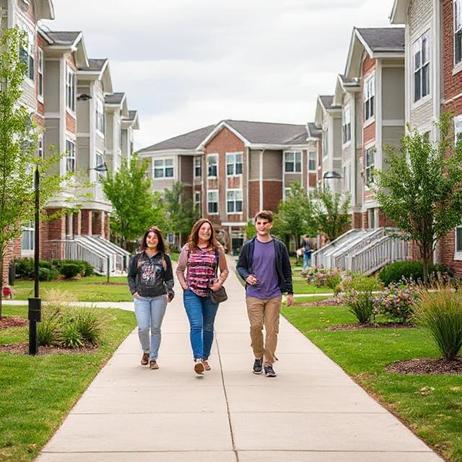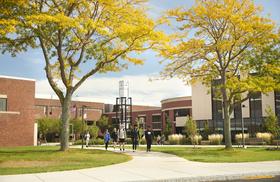Introduction
For decades, community colleges (or two-year colleges) have been viewed primarily as commuter institutions—students living off-campus and traveling each day. But that is changing. As of 2025, a growing—but still minority—segment of community colleges now offers on-campus housing, opening new decisions and trade-offs for students and families. In this article, we examine the pros, cons, and costs of community college housing so parents (and students) can make informed decisions.
The Landscape in 2025: How Common Is Community College Housing?
Only a minority of community colleges offer on-campus dorms. According to recent data, roughly 26 % of U.S. public two-year colleges operate student housing.
Many colleges still rely on public-private partnerships or ground leases to fund housing projects rather than owning and running dorms themselves. Federal Reserve Bank of Richmond
Some states or systems are incentivizing colleges to develop housing or wraparound services (e.g. mental health, child care) alongside housing.
In many regions, community colleges may partner with nearby apartment complexes or housing providers to reserve space for students. bold.org+1
Because of this variation, prospective students should always check directly with a college’s residential life or housing office to determine what options exist.
Pros of Community College Housing
Here are the key advantages of living on-campus at a community college:
1. Greater Access to Academic & Campus Resources
Living near classrooms, libraries, labs, and tutoring centers reduces commuting time and makes it easier to take advantage of support services.
2. Improved Retention and Completion
Studies suggest students in residential housing tend to persist at higher rates than commuters. For example, one college reported a retention rate of 89.6 % for residential students versus 83.8 % for nonresidential peers.
3. Stronger Sense of Community
Dorm life fosters interaction, peer support, and more active engagement with student clubs, events, and community-building activities.
4. Reduced Hidden Transportation Costs
Living on campus can mitigate expenses for parking, fuel, car upkeep, and public transit—especially valuable for students commuting long distances.
5. Support for Vulnerable Students
On-campus housing can serve as a critical resource for rural students, out-of-state learners, international students, or those facing housing insecurity. Community College Review+1
Cons & Challenges of Community College Housing
On the flip side, residential life is not without drawbacks:
1. Expense and Affordability
Dorms and meal plans can be costly. With limited supply, many institutions charge premium rates, and extra fees (utilities, laundry, deposits) may push costs higher.
2. Scarcity of Beds / Waitlists
Even when housing exists, demand can exceed supply, leading to long wait lists or less desirable room types.
3. Variable Quality & Amenities
Some dorms are basic—shared bathrooms, small rooms, limited kitchen access. Others are more upscale apartments with private bathrooms, kitchens, and common areas. The spectrum is wide. College Transitions+1
4. Rules, Restrictions & Less Autonomy
Students often must follow housing rules (guest policies, quiet hours, curfews), handle contract terms, and manage move-in/move-out logistics. This may conflict with jobs or family obligations.
5. Hidden Costs & Additional Fees
Not all dorm pricing is transparent. Students may pay separately for internet, security, furnishings, parking, or laundry. These add-ons can increase total cost beyond the advertised rate.
6. Limited Suitability for Nontraditional Students
Many dorms are not designed for student-parents or those needing private, flexible living. Standard dorms can be noisy or poorly suited to mature students or those with external responsibilities.
Cost Considerations & Financial Realities
Understanding housing costs is critical. Below is a comparison of common cost elements:
| Item | Typical Range / Notes | Considerations |
|---|---|---|
| Room & board (dorm + meals) | Varies widely; many colleges charge several thousand USD per academic year | Always confirm what is included (meals, utilities, furniture) |
| Utilities & internet | May or may not be included | If excluded, could add a few hundred dollars per year |
| Deposits / security fees | One-time refundable / non-refundable | Budget for upfront cost |
| Laundry, parking, furnishings | Often extra | These “hidden” fees add up |
| Off-campus alternatives | Private apartments or shared housing | In many areas off-campus rent may be cheaper (especially with roommates) |
Because community college housing is less common, there is sparse national average pricing, but anecdotal data suggest cost can rival what students pay at smaller universities.
Families should collect detailed estimates from the housing office and compare them with local rental market options, factoring in utilities and commuting costs.
Who Benefits Most — and Who Should Be Cautious?
Best Candidates for On-Campus Housing
Students from rural or remote areas, where daily commuting is impractical
International students or out-of-state learners needing stable housing
Learners experiencing housing instability or homelessness
Those who thrive in structured, engaged environments and desire to maximize access to campus support
Students Who May Want to Explore Alternatives
Residents living near campus or within affordable commuting distance
Those with significant outside obligations (work, family) requiring flexibility
Mature or nontraditional students who prioritize privacy or independent living
Students who can find off-campus housing that is more affordable or better suited to their lifestyle
Tips & Questions to Ask Before Choosing Housing
When evaluating whether to live in community college dorms, ask:
Total Cost Estimation: What is the all-in cost (room + meals + utilities + fees)?
Inclusions vs Optional Extras: Which services (internet, laundry, parking) are included and which cost extra?
Type & Layout: Are units dorm-style, suite-style, or apartment-style? Private bathroom or shared?
Housing Policies & Flexibility: What are lease lengths, guest policies, curfews, move-out terms?
Support Services & Security: Are there on-site staff, security, maintenance, wellness or childcare services?
Demand & Availability: How long is the waitlist? Are there priority categories?
Alternatives & Partnerships: Does the college partner with nearby housing, or provide referrals or discount agreements?
As one recent analysis observes, housing projects—even when land is available—carry risks: liability insurance, staffing, 24/7 services, maintenance, and added campus infrastructure must be supported.
Final Thoughts: Are Community College Dorms Worth It?
On-campus housing at community colleges can offer meaningful benefits: improved access to resources, higher retention, and a stronger community experience. For many students—especially those with limited housing options—it may transform their ability to persist and succeed.
However, the decision is highly context-dependent. With limited availability, variable quality, and potentially high costs and restrictions, it is not a one-size-fits-all solution. Parents and students should:
Gather detailed cost breakdowns from the college
Compare to local off-campus rental markets
Evaluate personal needs, obligations, and preferences
Consider flexibility and risk (e.g. applying early, having backup plans)
In 2025, community college housing is becoming a more visible option, but for many students, informed planning and careful comparison remain essential. With the right fit, it can be a powerful enabler of student success.















